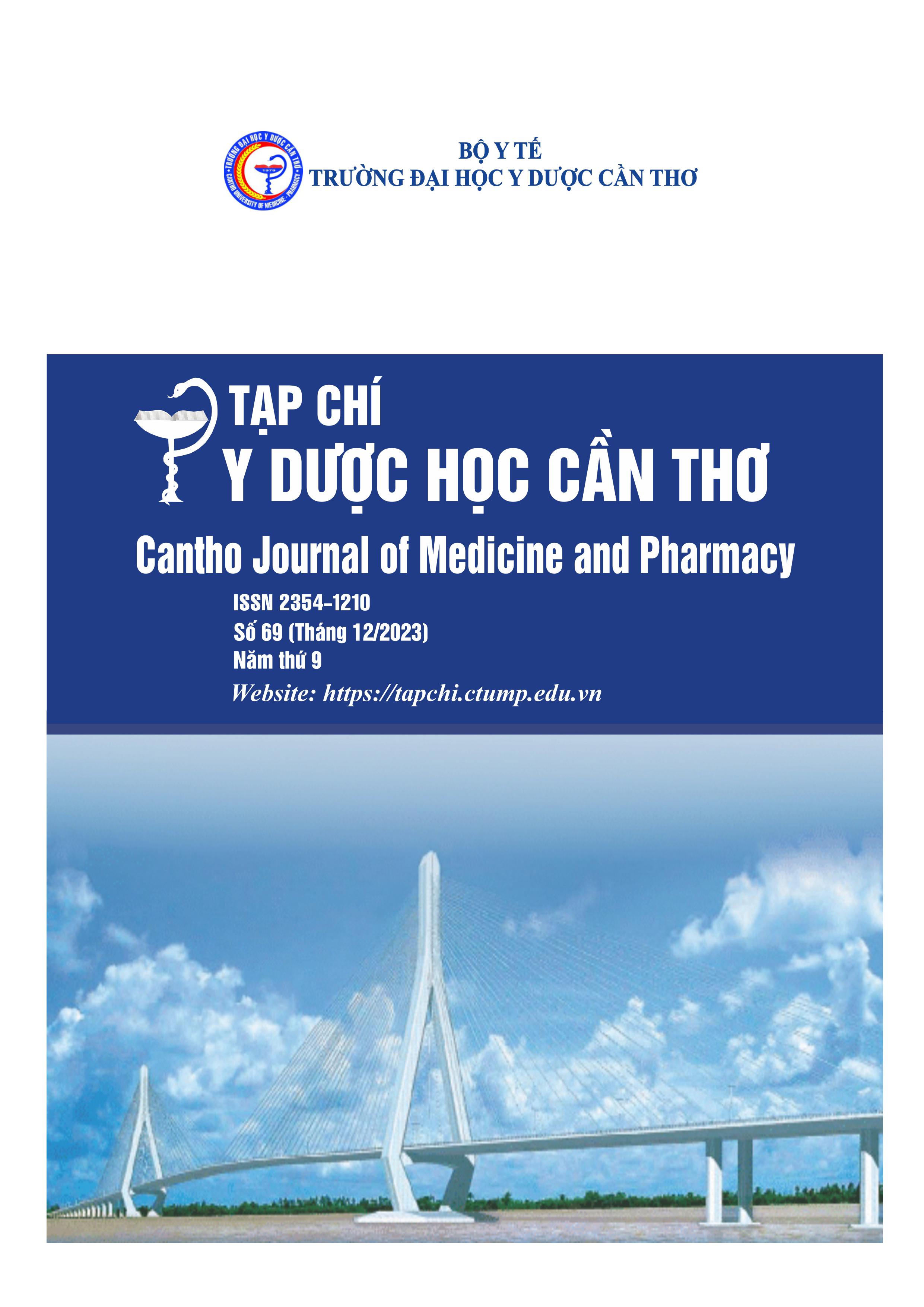ASSESSMENT OF BACTERIAL PROFILES AND ANTIBIOTIC RESISTANCE IN PATIENTS WITH TYPE 2 DIABETES AND NOSOCOMIAL PNEUMONIA AT CANTHO GENERAL HOSPITAL IN 2022
Main Article Content
Abstract
Background: Nosocomial pneumonia ranks second in hospital-acquired infections, increasing costs and burden of disease. Patients with type 2 diabetes are susceptible to many infections including pneumonia and are at high risk of developing nosocomial pneumonia. Objectives: 1) To survey on the rate of bacteria causing hospital-acquired pneumonia in patients with type 2 diabetes. 2) To survey on antibiotic resistance rates in some bacteria causing hospitalacquired pneumonia in patients with type 2 diabetes. Materials and method: The study was case series, retrospective and analytical. Sampling is based on hospital admission records from January 2020 to September 2022, the method sampling is convenience sampling. Results: Gram-negative bacteria accounted for the majority (97.4%). The three most common bacteria were Acinetobacter baumannii (36.8%), Klebsiella pneumoniae (36.8%), and Pseudomonas aeruginosa (13.2%). Except for Colistin (sensitive 100.0%), Gram-negative bacteria are highly resistant to Cephalosporin III and Fluroquinolone groups in most of the remaining antibiotics. Acinetobacter baumannii is almost completely resistant to antibiotics, except colistin (100.0% sensitive). Klebsiella pneumoniae and Pseudomonas aeruginosa were highly resistant to many antibiotics except colistin (sensitivity 100.0%). Conclusion: The three most common bacteria in diabetic patients with hospital-acquired pneumonia include Acinetobacter baumannii, Klebsiella pneumoniae, and Pseudomonas aeruginosa. The rate of Gram-negative bacteria resistant to antibiotics is very high but still sensitive to Colistin.
Article Details
Keywords
Nosocomial pneumonia, type 2 diabetes, antibiotic resistance
References
2. Đỗ Đình Vinh, Hà Nguyễn Y Khuê, Trần Ngọc Phương Minh, Đặng Nguyễn Đoan Trang. Khảo sát việc sử dụng kháng sinh trong điều trị viêm phổi bệnh viện tại Bệnh viện đại học Y dược thành phố Hồ Chí Minh, Y học Thành phố Hồ Chí Minh. 2019. 23 (2), 185-190.
3. Vu Dinh Phu, H. F. Wertheim, M. Larsson, et al. Burden of Hospital Acquired Infections and Antimicrobial Use in Vietnamese Adult Intensive Care Units. PLoS One. 2016. 11 (1), 1-2, doi: 10.1371/journal.pone.0147544. eCollection 2016.
4. Lê Bật Tân. Nghiên cứu đặc điểm lâm sàng, xquang phổi và vi khuẩn gây bệnh của viêm phổi bệnh viện ở người lớn điều trị tại Bệnh viện phổi Trung ương. Trường đại học Y Hà Nội. 2018.
5. Christopher JL, Murray Kevin, Shunji Ikuta, et al. Global burden of bacterial antimicrobial resistance in 2019: a systematic analysis, The Lancet. 2022. 399 (1), 629-655, doi: https://doi.org/10.1016/S0140-6736(21)02724-0.
6. Liu Yu Xin, Qiu-Mei Cao, Bing-Chen Ma. Pathogens distribution and drug resistance in patients with acute cerebral infarction complicated with diabetes and nosocomial pulmonary infection, BMC Infectious Diseases. 2019. 19 (1), 603, doi: 10.1186/s12879-019-4142-9.
7. Akbar-DH. Bacterial pneumonia: Comparison between diabetics and non-diabetics, Acta Diabetol. 2001. 38 (1), 77-82, doi: 10.1007/s005920170017.
8. Christopher JL, Murray Kevin, Shunji Ikuta, et al. Global burden of bacterial antimicrobial resistance in 2019: a systematic analysis, The Lancet. 2022. 399 (1), 629-655, doi: https://doi.org/10.1016/S0140-6736(21)02724-0.
9. WHO. The selection and use of essential medicines: report of the WHO Expert Committee on Selection and Use of Essential Medicines. World Health Organization. 2019.
10. Nguyễn Thị Thu Hồng, Cao Văn Hội, Phạm Thái Bình. Đặc điểm vi khuẩn trên bệnh nhân viêm phổi bệnh viện tại khoa nội hô hấp bệnh viện Nguyễn Tri Phương năm 2017 - 2018, Y học Thành phố Hồ Chí Minh. 2019. 23 (6), 198-203.
11. CDC. National Healthcare Safety Network (NHSN) Patient Safety Component Manual. CDC. 2022.
12. WHO. The selection and use of essential medicines: report of the WHO Expert Committee on Selection and Use of Essential Medicines. World Health Organization. 2019.


